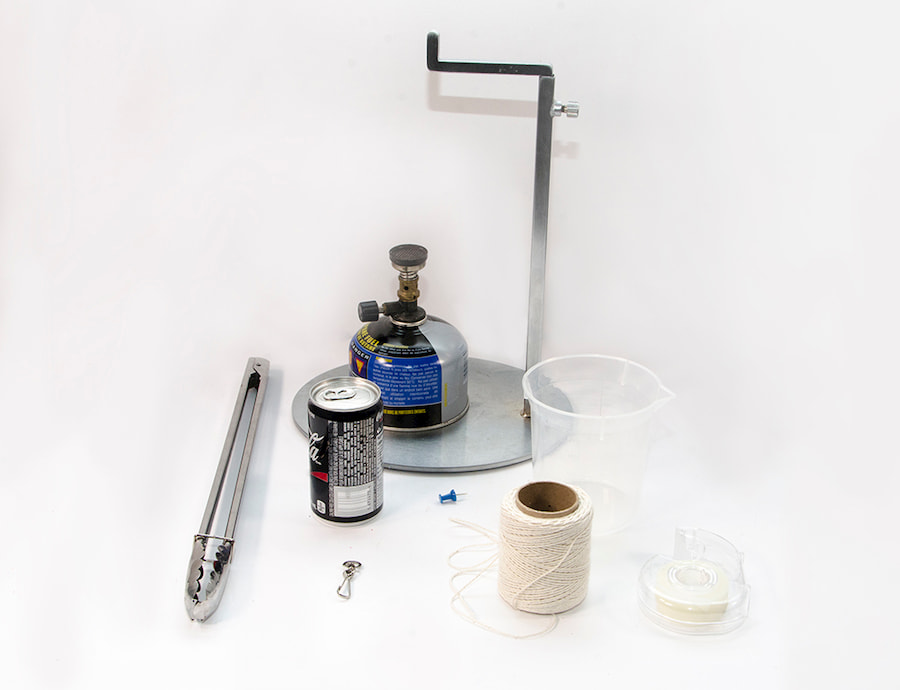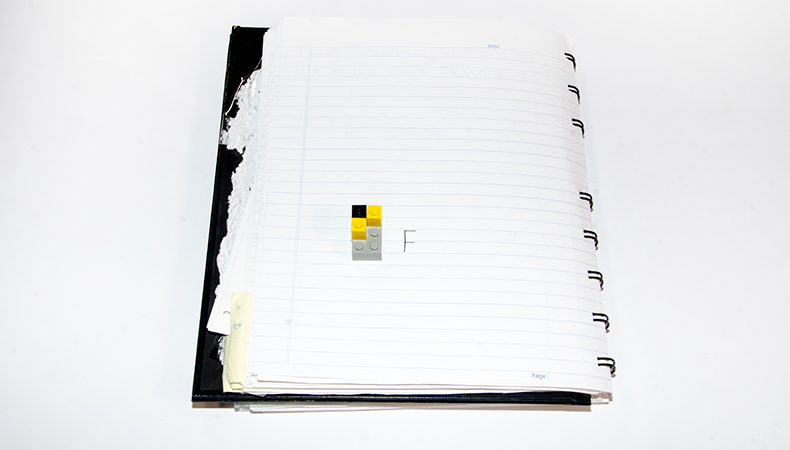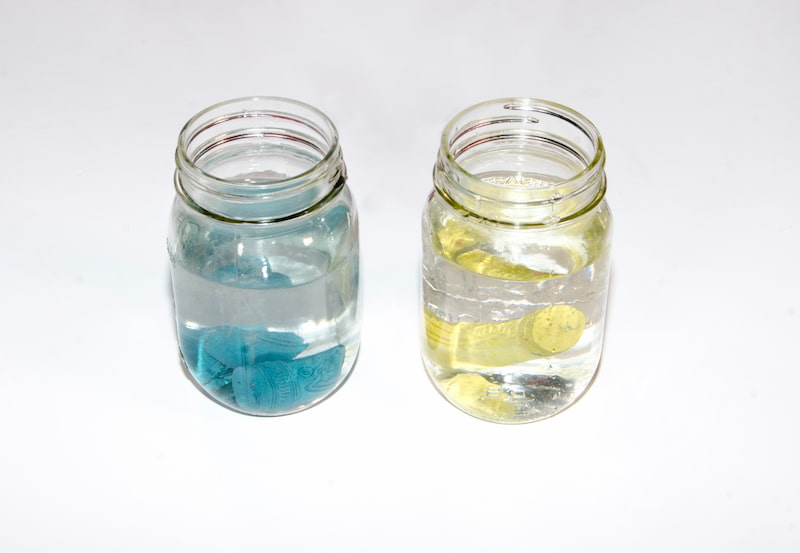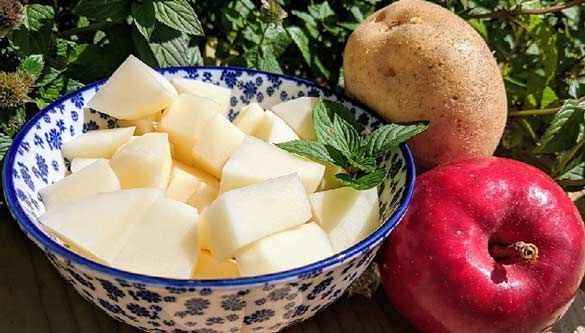Apples: Trick your taste buds!
Share :
Materials
- 1 apple
- 1 potato
- Cutting board and paring knife
- 2 bowls
- Mint (fresh or essence)
- Lavender (fresh or essence)
- Cotton ball or something absorbent (if using the essential oils of mint or lavender)
Instructions
- Rinse the apple and the potato under running tap water while rubbing them gently by hand. Pat dry with a clean cloth or paper towel.
- Use the paring knife to peel the apple and the potato and cut them into small cubes (about 2 cm in size). Place each in separate bowls.
Be careful when cutting the apple and potato. If necessary, ask an adult to help you. - Give each participant a cube of apple and a cube of potato. Have them pinch their noses while they sample and try to distinguish between the two. Don’t forget to do the same. Ask everyone to only eat half of the sample, then repeat the experiment without pinching their noses. The visual stimulus—the white cubes—which our brain associates with eating apples instead of potatoes and lack of smell will make it difficult for the participants to identify what they are eating.
- Give each participant another cube of apple and the mint. Have them eat a piece of apple while holding the mint under their noses. Repeat the experiment with lavender. The overpowering smell of mint will make it difficult to identify the flavour as apple, while the lavender compliments the apple’s taste. In both cases, however, it will be difficult to taste the apple.
Suggestions
Are there certain foods you don’t enjoy? Try eating them while pinching your nose, they won’t taste as bad.
Did you know?
Taste is sensed by the tongue, and smell is sensed by the nose. The combination of scent and taste produces flavour.
Our perception of taste is very limited compared to the thousands of smells we can detect. Without smell, we’re generally limited to four variables: sweet, sour, bitter and salty. A fifth taste, umami, was discovered at the beginning of the 20th century, and is Japanese for “delicious taste.” Umami acts like a flavour enhancer, and is found in many foods, such as meats, cheeses and tomatoes. Ketchup has a strong umami presence, which is why it enhances the saltiness of French fries so well.
Visual stimulus also plays a major role. Before the white chunk of apple or potato even hits your mouth, your eyes see it, and your brain thinks, “Get ready to taste apple!”, then tries to make your perception match the anticipated flavour. Your brain has already decided that what you are about to eat will taste like apple.
You may also be interested in

Soda can steam engine
In this activity, make your own soda can engine to see how steam energy can be transformed into kinetic energy, or movement.

Braille
Did you know that you can read using your sense of touch? Use Lego bricks to send a message to your friend using the Braille alphabet.

Chemical weathering
If you’ve ever seen a rusty building, or the green copper roof of the Parliament buildings in Ottawa, you’ve seen chemical weathering in action.
